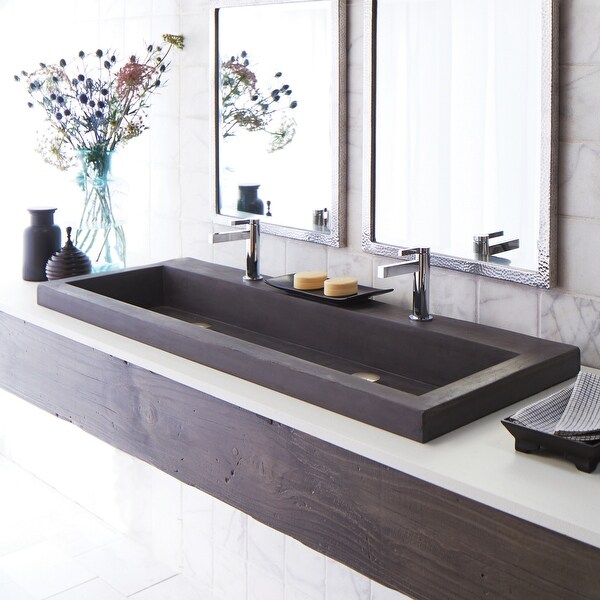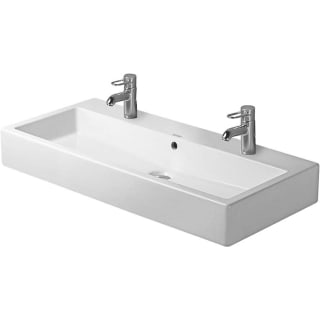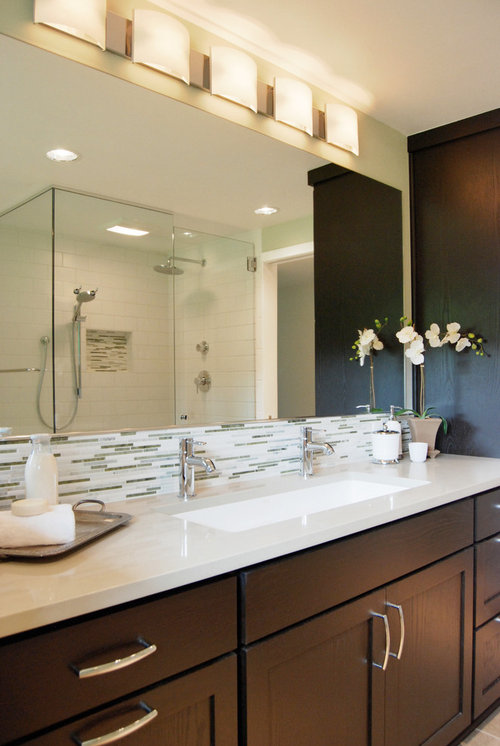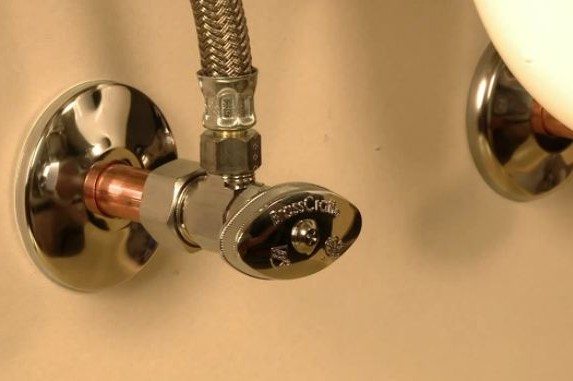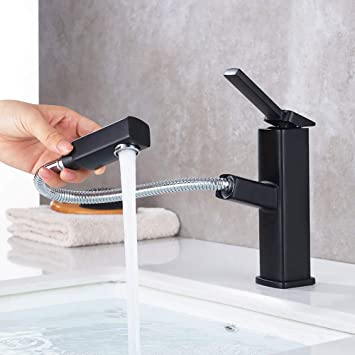Benefits of Installing a Double Faucet Bathroom Sink
When it comes to upgrading a bathroom, one of the most practical and aesthetically pleasing choices I’ve found is the installation of a double faucet bathroom sink. Whether you’re renovating or building from scratch, this feature can make a significant difference in both function and style. Let me walk you through the benefits of opting for a double faucet sink.
- Increased Convenience: One of the most apparent benefits is the sheer convenience of having two faucets. If you’ve ever had to share a bathroom with someone, you know the struggle of waiting your turn to brush your teeth or wash your face. With a double faucet sink, two people can use the sink simultaneously, cutting down on wait times and making the morning routine much smoother.
- Enhanced Aesthetic Appeal: A double faucet sink often serves as a focal point in the bathroom, adding a touch of elegance and symmetry. The balanced look of two faucets can elevate the overall design, making the bathroom look more sophisticated and organized. I’ve noticed that this simple addition can transform a mundane bathroom into a luxurious space.
- Better for Family Use: If you have a family, especially with kids, a double faucet sink can be a lifesaver. It allows multiple family members to use the sink without crowding or jostling for space. This feature is particularly helpful during the morning rush when everyone is trying to get ready at the same time. Trust me, it reduces the stress of shared bathroom time.
- Added Resale Value: When it comes to real estate, bathrooms can make or break a deal. A double faucet sink is a sought-after feature that can increase your home’s resale value. Potential buyers often appreciate the practicality and luxury of this setup, which could make your property stand out in a competitive market. I’ve seen firsthand how this can tip the scales in favor of a quicker sale.
- Efficient Water Usage: Surprisingly, a double faucet sink can also promote more efficient water usage. Since two people can use the sink at the same time, there’s less temptation to leave the water running while waiting for your turn. Additionally, many modern double faucet systems come with water-saving features that further enhance their efficiency.
- Customization Options: Finally, double faucet sinks offer a range of customization options. Whether you prefer a traditional or contemporary design, there’s a double faucet that will match your style. You can choose from various materials, finishes, and configurations to create a look that complements the rest of your bathroom. This flexibility is something I truly appreciate when designing a space that feels uniquely mine.

Types of Double Faucets for Bathroom Sinks
When considering a double faucet bathroom sink, it’s essential to understand the different types of faucets available. Each type offers unique features, and the choice you make can significantly impact the functionality and style of your bathroom. I’ll guide you through the most common types of double faucets so you can make an informed decision.
Traditional Dual-Handle Faucets
The traditional dual-handle faucet is probably the first image that comes to mind when you think of double faucets. This design features separate handles for hot and cold water, allowing you to control the temperature and flow independently. I find this type particularly appealing for its classic look and ease of use. It’s a perfect choice for those who appreciate a timeless aesthetic.
Wall-Mounted Faucets
Wall-mounted faucets are installed on the wall above the sink, offering a sleek and modern look. These faucets save counter space and make cleaning the sink area easier. I’ve always admired how wall-mounted faucets can give a bathroom a minimalist and uncluttered feel. They’re especially useful in smaller bathrooms where space is at a premium.
Single-Hole Faucets with Dual Controls
For those who prefer a more streamlined design, single-hole faucets with dual controls are an excellent option. These faucets feature a single spout with separate controls for hot and cold water, all within one fixture. I love how this type combines the functionality of a double faucet with the simplicity of a single installation point, making it both practical and stylish.
Bridge Faucets
Bridge faucets are a distinctive option that combines elements of both traditional and contemporary designs. The faucet and handles are connected by a horizontal “bridge,” creating a cohesive and eye-catching look. I find bridge faucets particularly appealing for their unique design that adds character and charm to any bathroom. They’re an excellent choice if you want your sink to stand out.
Center-Set Faucets with Dual Handles
Center-set faucets are a popular choice for those looking for a compact and affordable option. These faucets combine two handles and a spout on a single base, making them easy to install and ideal for smaller sinks. I appreciate the practicality of center-set faucets, especially in guest bathrooms or smaller spaces where you still want the convenience of dual controls.
Touchless or Sensor-Activated Faucets
For the tech-savvy, touchless or sensor-activated faucets are a modern marvel. These faucets turn on with just a wave of your hand, making them incredibly hygienic and convenient. I’ve seen these faucets become increasingly popular in homes looking to incorporate smart technology into their design. They’re perfect for reducing water waste and adding a touch of futuristic flair to your bathroom.
How to Choose the Right Double Faucet for Your Bathroom Sink
Choosing the right double faucet for your bathroom sink can be a daunting task, given the many options available. However, by considering a few key factors, you can find the perfect faucet that suits both your functional needs and design preferences. Here’s how I approach the selection process to ensure I make the best choice.
Assess Your Bathroom’s Style
The first step in choosing the right double faucet is to consider your bathroom’s overall style. Whether your bathroom is modern, traditional, or somewhere in between, the faucet should complement the existing design. I find that matching the faucet’s finish and design to other fixtures in the bathroom, such as the showerhead or cabinet hardware, helps create a cohesive look.
Consider the Sink Size and Configuration
The size and configuration of your sink are crucial factors in choosing a double faucet. Larger sinks can accommodate more substantial faucets with longer spouts, while smaller sinks may require a more compact design. I always recommend measuring the sink area and ensuring the faucet you choose fits comfortably without overwhelming the space.
Think About Functionality
Functionality is just as important as aesthetics when choosing a double faucet. Consider how you and your family will use the sink daily. For example, if you have children, you might want a faucet with easy-to-use handles or a touchless option. I also think about water flow and temperature control, ensuring the faucet offers smooth and precise adjustments.
Evaluate the Quality and Durability
A faucet is an investment, so it’s essential to choose one that’s built to last. Look for faucets made from high-quality materials like solid brass or stainless steel, which are resistant to corrosion and wear. I always check for faucets with a good warranty, as this often indicates the manufacturer’s confidence in the product’s durability.
Water Efficiency and Sustainability
In today’s eco-conscious world, water efficiency is a critical factor in choosing a faucet. Many double faucets come with water-saving features like aerators that reduce flow without sacrificing performance. I always look for faucets with the WaterSense label, which ensures they meet EPA standards for water efficiency. This not only helps the environment but can also lower your utility bills.
Budget Considerations
Finally, your budget will play a significant role in your faucet selection. While it’s tempting to go for the most luxurious option, it’s essential to balance cost with quality and functionality. I recommend setting a budget before you start shopping and sticking to it. There are plenty of affordable options that offer both style and performance, so you don’t have to break the bank to get a great faucet.
Installation Tips for a Double Faucet Bathroom Sink
Installing a double faucet bathroom sink might seem like a daunting task, but with the right approach and tools, it can be a manageable DIY project. I’ve tackled this installation myself and can share some tips to help you get it done smoothly and efficiently.
Gather the Necessary Tools and Materials
Before you begin, it’s essential to have all the tools and materials ready. You’ll need a wrench, plumber’s tape, silicone sealant, and, of course, the faucet and sink. I’ve found that having everything on hand before starting the installation prevents unnecessary delays and frustration.
Turn Off the Water Supply
The first step in the installation process is to turn off the water supply to the sink. This is a crucial step that ensures you won’t have any unexpected water leaks during installation. I usually locate the shut-off valves under the sink and turn them off, then open the faucet to drain any remaining water.
Prepare the Sink and Faucet
Once the water is turned off, you’ll need to prepare the sink and faucet for installation. This involves placing the gasket or silicone sealant on the base of the faucet to create a watertight seal. I always ensure the faucet is aligned correctly with the sink’s holes before securing it in place. Proper alignment is key to avoiding leaks and ensuring the faucet looks good.
Secure the Faucet to the Sink
After positioning the faucet, it’s time to secure it to the sink. This typically involves tightening nuts or screws underneath the sink. I recommend using a wrench to ensure the connections are tight but be careful not to over-tighten, as this can damage the faucet or sink. It’s a good idea to check the alignment again before fully tightening.
Connect the Water Supply Lines
With the faucet securely in place, the next step is to connect the water supply lines. This involves attaching the hot and cold water lines to the corresponding inlets on the faucet. I always use plumber’s tape on the threads to prevent leaks and ensure a secure connection. Once connected, I turn the water supply back on and check for any leaks.
Test the Faucet and Finish Up
The final step is to test the faucet to ensure everything is working correctly. I run both hot and cold water to check the flow and temperature control. If everything is functioning as it should, I’ll clean up any excess sealant or debris from the installation process. Installing a double faucet bathroom sink might take some time and patience, but the result is worth the effort.
Maintenance and Care Tips
Once you’ve installed your double faucet bathroom sink, proper maintenance and care are essential to keep it looking and functioning at its best. I’ve learned that regular upkeep can extend the lifespan of your faucet and prevent costly repairs down the road. Here’s how I maintain and care for my double faucet sink.
Regular Cleaning
Keeping your faucet clean is the first step in proper maintenance. I recommend wiping down the faucet with a soft cloth after each use to remove water spots and soap residue. For a deeper clean, I use a mild soap solution or a specialized faucet cleaner once a week. Avoid abrasive cleaners that can scratch the surface or damage the finish.
Preventing and Removing Limescale
Limescale buildup is a common issue, especially in areas with hard water. To prevent limescale, I use a vinegar solution to clean the faucet regularly. If limescale has already formed, soaking a cloth in vinegar and wrapping it around the affected area for a few hours can help dissolve the buildup. This method keeps the faucet looking shiny and new.
Inspecting and Replacing Seals
The seals in your faucet are essential for preventing leaks. Over time, these seals can wear out and need replacement. I make it a habit to inspect the seals every few months and replace them if I notice any signs of wear or leaks. This simple step can prevent more significant issues and ensure the faucet continues to function correctly.
Checking for Leaks and Drips
A dripping faucet isn’t just annoying; it can also waste a lot of water. I regularly check my faucet for any signs of leaks or drips. If I notice a problem, I address it immediately by tightening connections or replacing worn-out parts. Catching leaks early can save you from more extensive repairs later on.
Lubricating Moving Parts
The moving parts of a faucet, such as the handles and spout, can benefit from occasional lubrication. I use a silicone-based lubricant to keep these parts moving smoothly. This maintenance step is especially important for older faucets, where the moving parts may become stiff or difficult to operate over time.
Protecting the Finish
Finally, protecting the finish of your faucet is essential for maintaining its appearance. I avoid using harsh chemicals or abrasive pads that can scratch or dull the finish. If your faucet has a specialty finish like brushed nickel or oil-rubbed bronze, I recommend using a cleaner designed specifically for that material. By taking care of the finish, you can keep your faucet looking as good as new for years to come.
Common Issues and How to Fix Them in Double Faucet Bathroom Sinks
Even with the best care, double faucet bathroom sinks can experience issues over time. Knowing how to troubleshoot and fix these common problems can save you from costly repairs and extend the life of your sink. I’ll share some of the most common issues I’ve encountered and how to address them.
Low Water Pressure
Low water pressure is a frustrating problem that can be caused by several factors. In my experience, the most common culprit is a clogged aerator. The aerator, located at the tip of the faucet, can become blocked with mineral deposits or debris. To fix this, I remove the aerator and soak it in vinegar to dissolve any buildup. If the problem persists, it might be due to a more serious issue with the plumbing, which may require professional assistance.
Leaky Faucet Handles
A leaky faucet handle is another common issue that I’ve dealt with. This problem is often caused by worn-out seals or O-rings inside the faucet. To fix it, I disassemble the faucet handle, replace the worn parts, and reassemble it. It’s a relatively simple repair that can prevent water waste and further damage to the faucet.
Faucet Dripping When Turned Off
If your faucet drips even when it’s turned off, it’s likely due to a damaged valve seat or cartridge. In my experience, replacing the faulty component usually resolves the issue. Depending on the type of faucet, you may need to replace the entire cartridge or just the valve seat. I’ve found that this repair is manageable with basic plumbing tools and a little patience.
Loose Faucet Base
Over time, the faucet base can become loose, causing the faucet to wobble or leak around the edges. I’ve encountered this issue in older installations where the mounting hardware has loosened. To fix it, I tighten the nuts or screws securing the faucet to the sink. If the problem persists, applying a fresh bead of silicone sealant around the base can help create a watertight seal.
Noisy Faucet
A noisy faucet, whether it’s a whistling sound or a loud banging when turned on, can be caused by several issues. In my experience, these noises are often due to air trapped in the pipes or a problem with the water pressure. I usually start by checking the water pressure and adjusting it if necessary. If the noise persists, bleeding the air out of the pipes by opening all the faucets in the house for a few minutes can help.
Rust or Corrosion
Rust or corrosion on a faucet is not only unsightly but can also lead to more serious issues if left unchecked. I’ve found that regular cleaning and the use of rust-inhibiting products can prevent this problem. If rust has already formed, using a rust remover or a mixture of baking soda and vinegar can help clean it up. However, if the corrosion is severe, it might be time to consider replacing the faucet.
Weibath 47 Inch Wall-Mount Double Sink Stone Resin Trough Bathroom Sink with 2 Faucet Holes (Glossy White)
Bathroom Sinks Trends to Try
Trough Bathroom Sink With Two Faucets
Anyone have a single trough sink w/2 faucets in master bathroom?
Luxury Trough Rectangular Vessel Sink w/ Double Faucet
Related Posts:
- Kohler Bathroom Sink Stopper Parts
- Bathroom Sinks Glasgow
- Bathroom Sink Double Vanity
- Bathroom Sinks By Kohler
- Gnats In Bathroom Sink Drain
- Long Bathroom Sink With Two Faucets
- American Standard Bathroom Sink Faucets
- Kohler Bathroom Sink Faucet Leaking
- One Piece Bathroom Sink And Vanity Top
- Bathroom Sink Faucet Types


